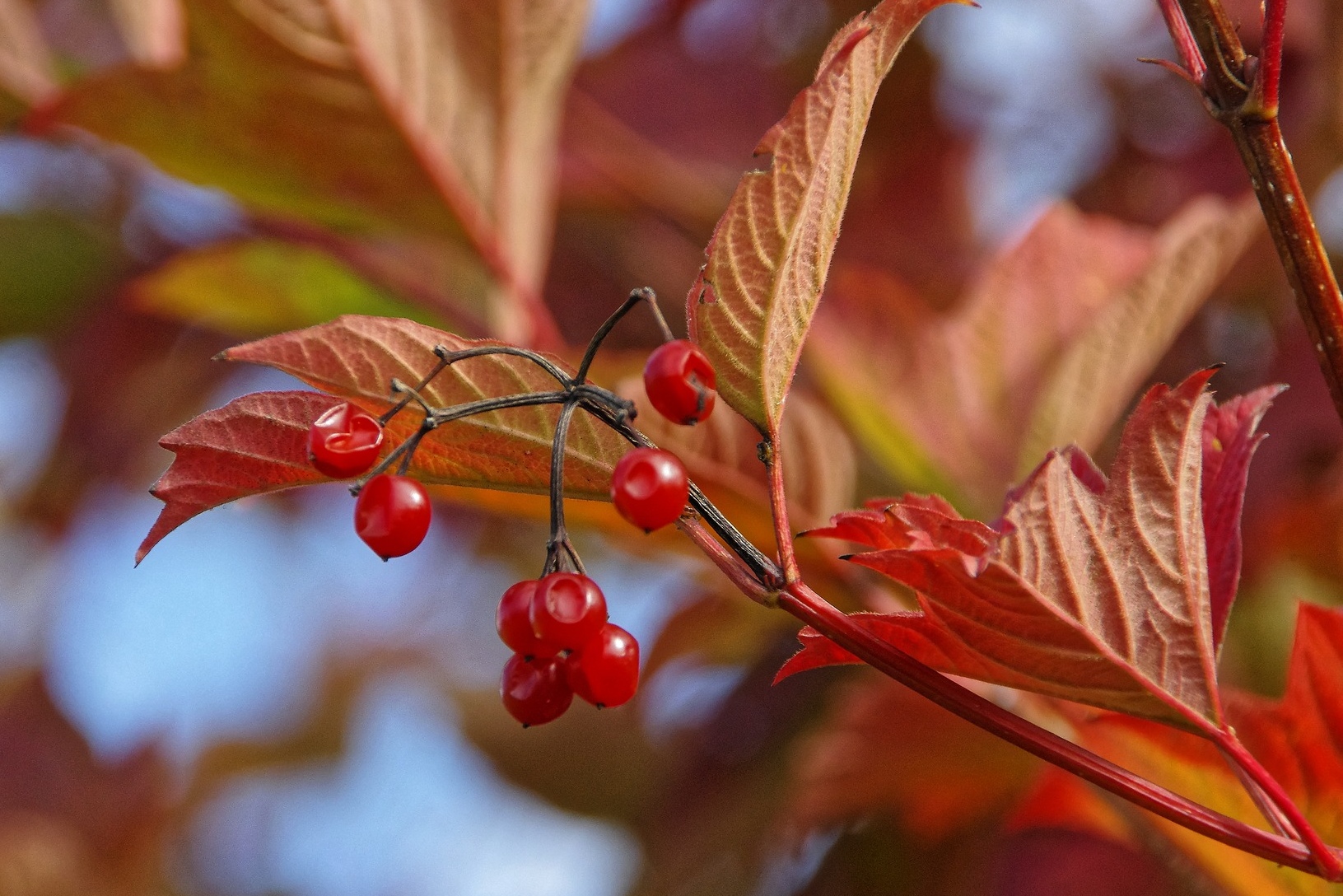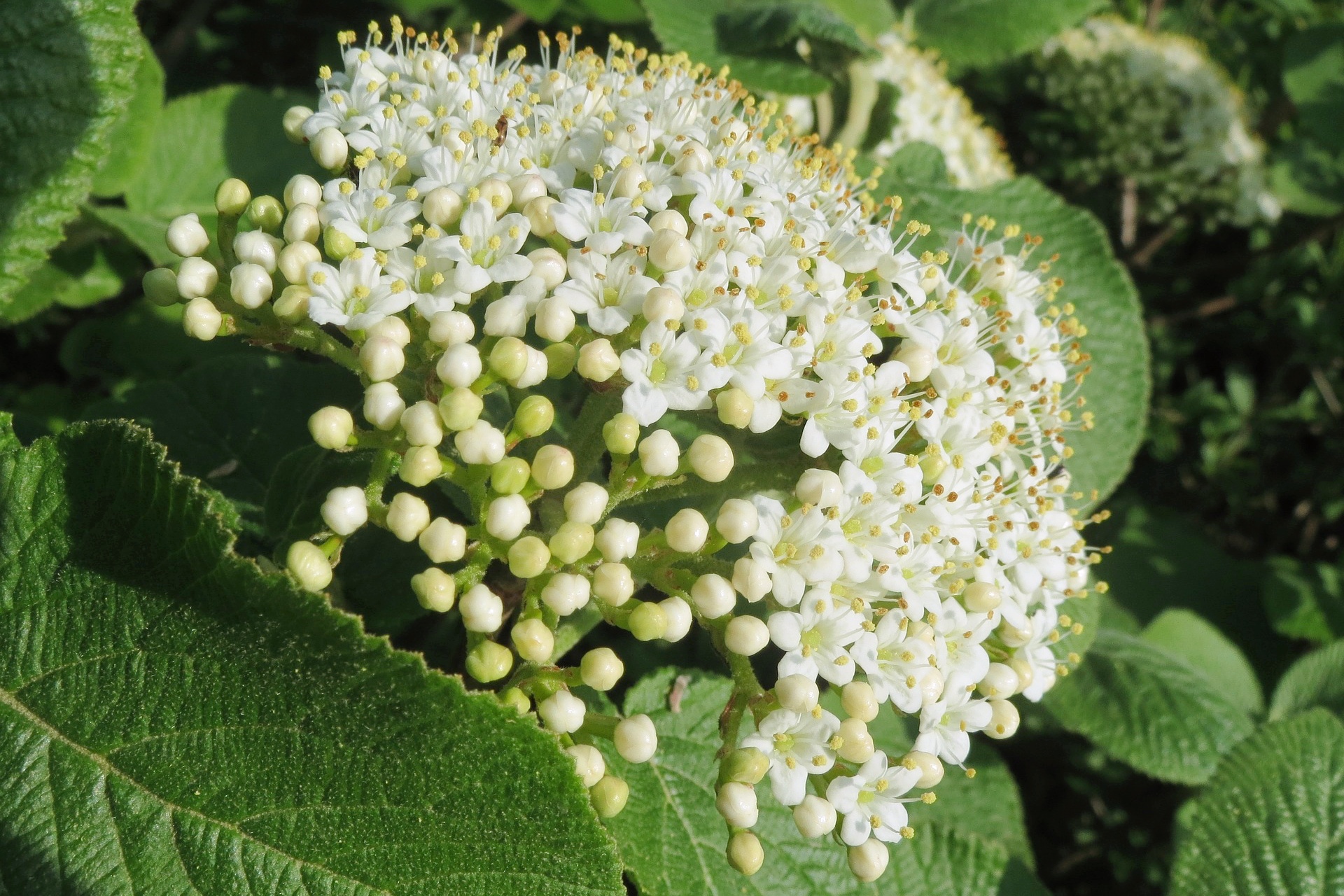Viburnum shrubs come in many forms, so there’s bound to be one that fits your garden! Here’s how to plant, grow, and care for viburnum shrubs at home.
About Viburnum
For a flowering shrub with abundant benefits—fragrance, fruit, colorful foliage, pollinator appeal and more—look no further than viburnums. The species offers more than 150 evergreen, semi-evergreen, and deciduous woody plants from which to choose. Also known as cranberrybush, hobblebush, arrowwood, nannyberry, or snowball bush, viburnum range in size from 2 to 20 feet tall and usually serve in the landscape as screening, hedge, or focal points.
Depending on the variety, viburnum provides year-round visual interest: The cream/white or pale pink bloom clusters can be lacecap, dome, and snowball-shape, with intoxicating or light perfume (although some have no scent). In fall, the flowers, favored by bees and butterflies, give way to yellow, orange, red, pink, blue, or black fruits attractive to birds and wildlife, and foliage on plants that are not evergreen change to glossy red or violet or purple.
All this and viburnums are easy care: fast growing, not fussy about soil, need little to no pruning, and seldom are troubled by diseases or pests.












Comments